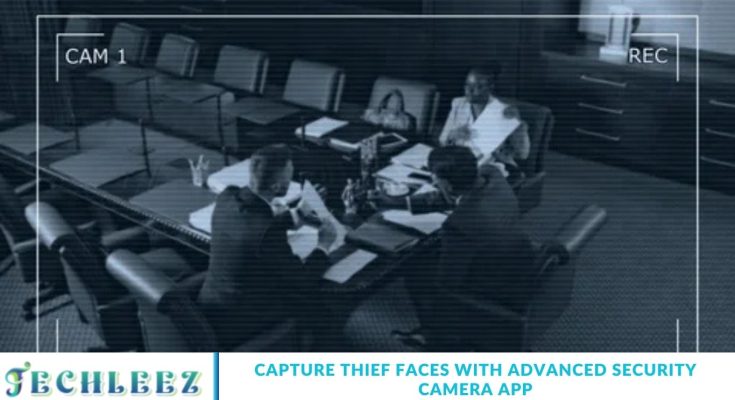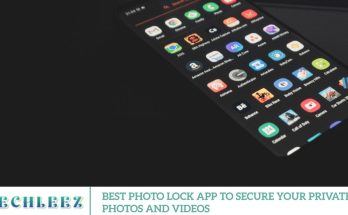Safeguarding personal property and sensitive areas is more crucial than ever. From homes and offices to vehicles and smartphones, the risk of theft remains a constant concern. While conventional alarms and surveillance systems offer some protection, modern technology now provides a more intelligent and proactive defense—Thief Face Capture.
This cutting-edge security solution utilizes high-resolution cameras paired with facial recognition to detect, record, and notify users of suspicious activity or unauthorized access attempts. Integrated into home security systems, mobile devices, ATMs, and retail surveillance networks, Thief Face Capture technology enables users to prevent crimes in real time while gathering valuable evidence for investigations.
What is the Thief Face Capture?
Thief Face Capture refers to advanced technology designed to automatically detect, photograph, or record video of individuals attempting unauthorized access—typically intruders or thieves. The goal is not only to deter criminal activity but also to collect critical facial data that can assist in identifying and apprehending suspects.
This intelligent system is commonly integrated into smart security cameras, anti-theft mobile apps, and IoT-based home or office security setups. When an unauthorized access attempt occurs—whether on a smartphone, vehicle, room, or property—the face capture module is triggered. It instantly records the suspect’s face through photo or video, storing the footage locally or securely uploading it to cloud storage.
Captured images are often timestamped and geotagged for accuracy, making them valuable evidence. These files can then be automatically shared with the device owner, emergency contacts, or law enforcement, enhancing the chances of swift action and recovery.
How Thief Face Capture Works
Thief face capture systems vary depending on their application—mobile, residential, or commercial—but the core process typically includes:
Motion Detection or Unauthorized Access Trigger
The system stays on standby until it detects motion or an unauthorized access attempt. Common triggers include failed PIN entries, forced entry, unusual movement near the secured area, or tampering with the device or environment.
Automatic Camera Activation
Upon detecting suspicious activity, the system automatically activates the camera—often in stealth mode. It captures a high-quality photo or video of the intruder’s face without alerting them.
AI-Based Face Detection and Recognition
Advanced systems utilize artificial intelligence for facial detection. Some go further by performing real-time facial recognition to determine whether the individual is authorized or unknown.
Instant Alerts and Notifications
Once a face is captured, the system sends an instant notification to the device owner, security personnel, or emergency contacts. In mobile-based systems, the captured image can also be sent via email or SMS for immediate action.
Secure Local or Cloud Storage
The captured photo or video is securely stored—either locally on the device or uploaded to encrypted cloud storage—ensuring it’s available for later review or evidence submission.
Optional Law Enforcement Integration with AI
Some systems are integrated with criminal databases and law enforcement networks. AI algorithms can analyze the captured face and match it against known offender profiles, triggering additional alerts or official intervention.
Rise of Smart Surveillance
Traditional surveillance systems, while effective in deterring crimes, are limited in their responsiveness. They typically record passively, storing footage that requires manual review after an incident. This approach, while useful, is reactive rather than proactive. With the rise of intelligent surveillance, cameras have evolved from simple recording tools into intelligent security agents. Modern apps equipped with thief face capture features use machine learning and AI to identify threats instantly.
These advanced systems remain alert 24/7 and activate only when necessary, conserving storage and ensuring that only relevant incidents are captured. The integration of cloud storage and mobile access enables users to be notified immediately of suspicious activity, regardless of their location.
How Face Capture Technology Works
Face capture technology integrates various components to effectively identify and respond to security threats. These systems typically operate through a series of automated processes that begin with motion detection. When motion or unauthorized access is detected, the system activates its camera, often in stealth mode, to record high-resolution images or video of the suspect’s face.
Some applications take it a step further by utilizing facial recognition software that compares the captured image to a database of known faces—either authorized users or individuals flagged for identification. If the face is unrecognized or matches a potential threat, the system can escalate its response by sending alerts to the property owner or designated contacts. In more advanced settings, alerts may even be routed to law enforcement.
Captured data is then stored either locally or in the cloud, usually encrypted to protect privacy. The inclusion of timestamps and geotags enhances the evidentiary value of the recordings, making them useful for legal or investigative purposes.
Popular Use Cases and Real-World Scenarios
Thief face capture is no longer limited to high-security government or corporate installations. The technology is now readily available and applicable to everyday settings. Homeowners use it to monitor entrances, garages, and even package deliveries. Business owners implement these apps to secure offices after hours or to monitor staff activity. Car owners use dash cams and connected vehicle surveillance systems that activate upon detecting break-ins or theft attempts.
In smartphones, face capture activates when someone attempts unauthorized access, such as multiple failed PIN entries. The app silently takes a snapshot and sends it to the rightful owner, along with a location map. This is particularly useful in cases of stolen phones or lost devices falling into the wrong hands.
Retail environments utilize this technology to deter shoplifting and maintain a record of faces entering and exiting stores. If theft occurs, recorded images can be vital in identifying suspects.
Features of Thief Face Capture [Completely Detailing]
| Feature | Description |
|---|---|
| Automatic Camera Activation | Triggers a photo or video capture automatically on unauthorized access. |
| Stealth Mode Operation | Operates silently and without alerting the thief, ensuring capture integrity. |
| Face Detection Technology | Detects human facial features accurately in various lighting conditions. |
| AI Facial Recognition | Matches captured faces with pre-registered or blacklisted individuals. |
| Time & Location Stamp | Adds time and GPS data to captured photos for accurate documentation. |
| Real-Time Alert Notifications | Instantly notifies users via SMS, push notification, or email. |
| Cloud Backup & Sync | Stores captured data securely in the cloud for remote access. |
| Offline Capture Support | Works without internet and syncs data once online. |
| Tamper-Proof Design | Anti-theft design that prevents the disabling of camera or software. |
| Multi-Angle Recording | Uses multiple lenses or cameras to record the thief from various angles. |
| Integration with Alarms | Can be linked with sirens or alarms for immediate threat deterrence. |
| Encrypted Storage | Ensures that photos and videos are secured and cannot be deleted by intruders. |
| Multi-Device Compatibility | Available for smartphones, smart homes, vehicles, and business premises. |
| Auto-Upload to Drive/Email | Sends photo proof to cloud or user email immediately. |
| Failed Unlock Attempts Tracker | Keeps logs of failed unlock attempts with associated face captures. |
Pros of Thief Face Capture [Use Table]
| Pros | Details |
|---|---|
| Proactive Security | Helps capture thieves in the act and collect vital evidence. |
| Real-time Alerts | Immediate alerts allow swift response or remote action. |
| Deters Intruders | The possibility of face capture discourages break-ins. |
| Useful for Police Investigations | Clear facial data is invaluable for law enforcement. |
| Easy to Install | Most mobile and smart home systems offer plug-and-play functionality. |
| Cloud Backup Protection | Captured data is safe even if the device is stolen. |
| Night Vision Support | Many systems offer infrared or low-light capture capabilities. |
| Tamper-Proof Storage | Secured logs and photos prevent tampering by intruders. |
| Works Without Human Monitoring | Fully automated system reduces the need for constant human surveillance. |
| Customizable Triggers | Users can define what actions trigger face capture (wrong PIN, motion, etc.) |
Cons of Thief Face Capture [Use Table]
| Cons | Details |
|---|---|
| Privacy Concerns | May raise ethical issues if misused without consent. |
| Dependence on Camera Quality | Poor image quality may limit the usefulness of the photo. |
| Not Foolproof | Thieves may cover their faces or disable the camera. |
| Cloud Dependency | Some systems rely heavily on internet/cloud, which may not always be reliable. |
| False Alarms | Pets, shadows, or authorized users can trigger unnecessary captures. |
| Power/Battery Limitations | Systems without backup can fail during outages. |
| Cost for Advanced Features | Premium software versions or devices can be expensive. |
| Legal Limitations | Certain jurisdictions restrict the use of surveillance without notification. |
Thief Face Capture Alternatives [Use Table]
| Tool/App/System | Key Features | Platform/Use |
|---|---|---|
| Cerberus Anti Theft | Captures intruder’s face on failed unlock; GPS tracking; SIM change alerts | Android |
| Prey Anti-Theft | Multi-platform theft recovery with camera, lock, and tracking | Android, iOS, Windows, Mac |
| Find My iPhone/Find My | Apple’s native location tracker; sends last known location; no face capture | iOS/Mac |
| Hidden App | Takes photos secretly and emails them to the owner | Android |
| AlfredCamera | Turns phones into security cameras; includes face detection and real-time alerts | Android, iOS |
| Manything | Converts phone into surveillance cam with face-capture and motion detection | iOS |
| Blink by Amazon | Smart home cam with motion and human detection, app notifications | Home security |
| Wyze Cam | Inexpensive smart cam with cloud storage, facial detection, and voice communication | Home/Office Security |
| Nest Cam (Google) | Facial recognition AI, real-time alerts, integration with Google Home | Smart Home Integration |
| Avast Mobile Security | Anti-theft module with photo capture, sound alarm, and remote lock | Android |
Thief Face Capture
Thief face capture technology is transforming the security landscape by introducing automation and intelligence into theft prevention strategies. Unlike traditional systems that rely on reactive responses—such as alarms or delayed police intervention—this advanced solution empowers users with real-time monitoring and the ability to collect evidence.
From smartphones that snap a photo during failed PIN attempts to AI-powered home security cameras capable of identifying intruders, thief face capture is now more accessible and affordable than ever. Whether safeguarding your home, office, car, or mobile device, this technology offers a powerful layer of protection and peace of mind.
However, it’s essential to use these systems responsibly. Adhering to local privacy laws and ethical guidelines is crucial to ensure legal compliance and avoid misuse. For optimal protection, thief face capture should be integrated with complementary security tools, such as motion detectors, smart alarms, and remote access controls.
Frequently Asked Questions
What is thief face capture technology?
Thief face capture technology refers to systems designed to automatically detect and record the face of anyone attempting unauthorized access. It uses cameras and facial recognition to identify intruders, providing valuable visual evidence for security purposes.
Where can this technology be used?
This technology is commonly used in smartphones, smart home security systems, office surveillance setups, ATMs, and vehicles. It enhances protection in any environment where theft or unauthorized access is a concern.
How does thief face capture work?
Motion detection or failed access attempts, such as incorrect PIN entries, typically trigger the system. Once activated, it captures a photo or video of the suspect’s face and stores it either locally or in the cloud. Some systems also send real-time alerts to the owner or security team.
Is thief face capture technology legal to use?
The legality of using face capture technology depends on local laws and privacy regulations. In most regions, it is legal for personal security use, but users must avoid invading others’ privacy or using the technology for unauthorized surveillance.
Can it identify repeat offenders or known criminals?
Advanced systems equipped with AI may connect to criminal databases and can identify repeat offenders through facial recognition. This capability is typically found in enterprise-level or law enforcement-grade systems.
Does the captured data remain secure?
Yes, most modern theft detection systems prioritize data security by encrypting captured images and storing them in secure cloud platforms or protected local storage. Users should ensure that their devices follow best practices for cybersecurity.
Can I integrate this with other security devices?
Thief face capture technology is often compatible with other smart security devices, such as motion sensors, alarms, door locks, and mobile apps. Integration provides a more comprehensive and effective security system.
Conclusion
Thief face capture technology adds a smart layer of security by automatically detecting and recording faces during unauthorized access attempts. It works seamlessly in homes, offices, vehicles, and smartphones, offering real-time alerts and secure image storage. This proactive system helps deter theft and supports quick identification of intruders. With features like AI recognition and cloud backup, it enhances overall protection. When used responsibly, it’s a reliable tool for modern security needs.




